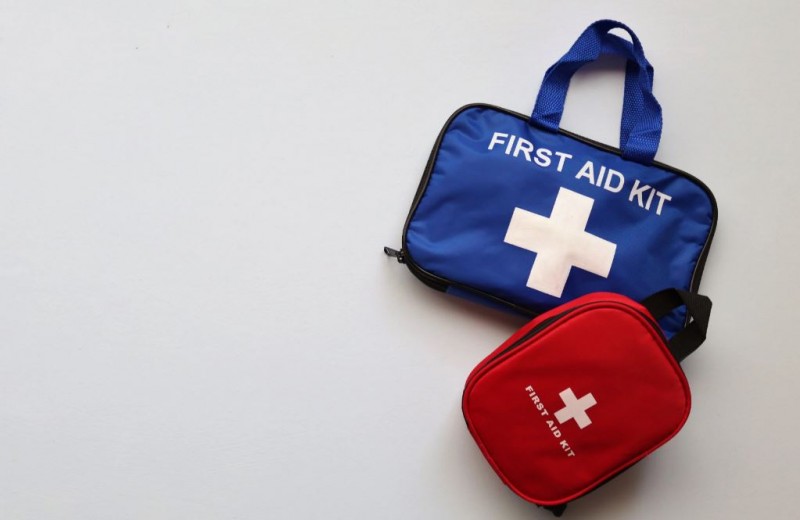
Accidents and injuries can happen unexpectedly, whether at home, work, or during outdoor activities. Knowing how to administer basic first aid can make a significant difference in providing immediate care and preventing further harm before professional medical help arrives. In this article, we will explore essential first aid techniques for common injuries, equipping you with the knowledge to respond effectively and confidently in emergencies.
First Aid Kit Essentials
Before delving into specific injury treatments, it's crucial to have a well-stocked first aid kit readily available. A basic first aid kit should include items such as adhesive bandages, sterile gauze pads, antiseptic wipes, adhesive tape, tweezers, scissors, instant cold packs, disposable gloves, and pain relievers. Regularly check and replace any expired or depleted items to ensure your kit is always ready for use.
Handling Cuts and Scrapes
Cuts and scrapes are some of the most common injuries we encounter. To treat them effectively, start by washing your hands and cleaning the wound with mild soap and water. Apply gentle pressure with a clean cloth to stop any bleeding, and then cover the wound with an adhesive bandage or sterile dressing to protect it from further contamination.
Dealing with Burns
Burns can range from minor to severe, depending on their depth and size. First-degree burns only affect the top layer of skin and can be treated with cold water and a sterile dressing. Second-degree burns may cause blisters and require medical attention. For third-degree burns, call emergency services immediately and avoid applying anything to the burn site. Elevate the burned area if possible while waiting for help.
Treating Sprains and Strains
Sprains and strains often occur during physical activities and can cause pain and swelling. The RICE method is highly effective in managing these injuries: Rest the affected limb, apply Ice to reduce swelling, use Compression with an elastic bandage, and Elevate the injured area. If the pain persists or intensifies, consult a healthcare professional.
Managing Fractures
Fractures, or broken bones, require careful handling to prevent further damage. If you suspect a fracture, immobilize the injured area using a splint or sling before seeking medical help. Avoid moving the affected limb, as it may worsen the injury.
Handling Nosebleeds
Nosebleeds can be alarming, but they are generally not severe. To stop a nosebleed, have the person sit up straight, leaning slightly forward. Pinch the soft part of the nose, just below the bridge, for about 10 minutes, while breathing through their mouth. If the bleeding persists or is accompanied by other symptoms, consult a healthcare professional.
Responding to Insect Bites and Stings
Insect bites and stings can cause irritation and discomfort. Remove any stingers left behind, clean the area with soap and water, and apply a cold pack to reduce swelling. Over-the-counter antihistamines or creams can also help alleviate itching and redness.
CPR and Basic Life Support
Cardiopulmonary resuscitation (CPR) can be a lifesaving technique during cardiac emergencies. To perform CPR, place the heel of one hand on the center of the person's chest, just below the nipple line. Interlock your other hand on top, and with straight arms, use your body weight to compress the chest downward about 2 inches. Continue compressions at a rate of 100-120 per minute until professional help arrives.
Dealing with Choking Emergencies
Choking occurs when the airway is blocked by a foreign object. If someone is choking, encourage them to cough forcefully. If the obstruction persists, stand behind the person and perform the Heimlich maneuver by making a fist with one hand and placing it just above their navel. Grab your fist with the other hand and perform quick inward and upward thrusts until the object is dislodged.
First Aid for Eye Injuries
Eye injuries require delicate care to prevent further harm. If a foreign object is embedded in the eye, do not attempt to remove it; instead, cover the eye with a sterile dressing and seek medical help immediately. For other eye injuries, flush the eye with clean water or saline solution to rinse out any debris.
Handling Heat-Related Illnesses
Heat exhaustion and heatstroke are serious conditions that can occur during hot weather or strenuous activities. Move the affected person to a cooler area, loosen tight clothing, and apply cool, wet cloths to their body. Offer small sips of water if they are conscious, and seek medical attention promptly.
First Aid for Allergic Reactions
Anaphylaxis is a severe allergic reaction that requires immediate attention. If someone shows signs of anaphylaxis, such as difficulty breathing or swelling of the face and throat, administer epinephrine using an autoinjector if available, and call emergency services immediately.
Managing Fainting and Seizures
When someone faints, lay them down and elevate their legs to restore blood flow to the brain. If a person experiences a seizure, create a safe space around them and cushion their head. Stay with them until the seizure subsides, and offer reassurance and support.
Basic first aid skills are essential for everyone, as accidents can happen at any time and place. By learning these fundamental techniques, you can become better prepared to handle common injuries and medical emergencies. Remember to keep your first aid kit up to date, and regularly review the steps for administering first aid. Empower yourself with knowledge, and you'll be equipped to assist others in times of need.
How to Encourage Physical Activity and Sports in Children